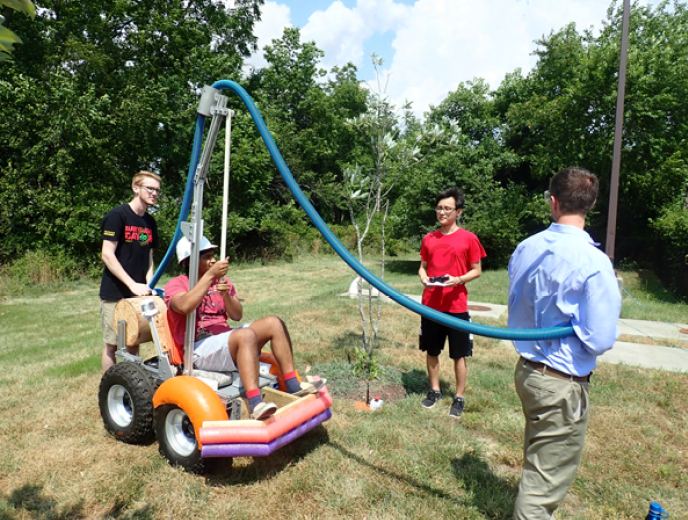Robotic companions are a mainstay of sci-fi series everywhere. From R2D2 to Johnny 5, these characters typically have a supporting role in the story and are helpful to their human companions. But what if they were integral to the humans in the story? So much so that they couldn't live without their robotic compatriots? That's the idea behind Biobot, which was given a NIAC grant in 2018 - why not use a robotic companion to carry supporting equipment on human extravehicular activities (EVAs) on other planets?
If you watch the footage from the Apollo missions, you can see how awkward it is for the astronauts to bend over to pick things up. Also, these extraordinarily naturally fit and gifted people seem to fall over an awful lot, given how coordinated they are on Earth. That's probably because a 61 kg pack on their back is helping to keep them alive.
Each moonwalker had to carry a life support system on their suit to maintain conditions inside the suit that allowed them to breathe and not cook to death. This portable life support system (PLSS) weighed almost as much as the astronauts. It dramatically changed their center of gravity from its typical interalized location to somewhere behind their shoulder blades. That limited the astronaut's mobility and, even with the light lunar gravity, limited the time they could participate in an EVA before becoming exhausted.
Alternatively, in microgravity, EVAs have taken place using umbilical cords and a larger life support system inside the space station or shuttle. This has proven successful, but managing the umbilical cords requires a significant amount of overhead—typically, another astronaut manages it for the person doing the EVA. Given the importance of productively utilizing all of an astronaut's time, it would be better not to require that helping hand.
Dr. David Akin of the University of Maryland's Department of Aerospace Engineering considered all that, and his solution is Biobot. The final design is a small rover capable of following an astronaut around on an EVA and attaching to their suit via an umbilical cord that the rover manages. As part of the NIAC grant Dr. Akin received, he and his team looked at potential design trade-offs as well a developed a working prototype of the system.
First, let's discuss some advantages. Biobot removes the heavy weight from the astronaut's back, freeing them from carrying it around and moving their center of gravity back to a more familiar place. It can also allow PLSS designers to add components that would otherwise be considered unsuitable for fitting into a backpack itself, such as radiative cooling systems.
It can also serve as a platform for holding collected samples or tools necessary for the mission. It can even let the astronaut ride on it in a pinch as a last resort in emergencies. Since it is mobile, the umbilical cord that would typically tie the astronaut to a base station is no longer an issue, and since it is designed to traverse any terrain an astronaut can, it should be capable of keeping up with them.
From some of the pictures in the NIAC final report, it appears the engineers working on the project had fun developing the system. They successfully showed a proof-of-concept of the basic functionality of what they expected the Biobot to do. They also plan to continue developing it, including a test phase at NASA's "Rockyard" planetary surface simulator.
However, no additional NASA funding has been forthcoming. Though the paper mentions volunteer student support, it seems the Biobot idea is on hold for now. But someday, astronauts exploring the lunar or Martian surface might have a robotic companion with them that can provide both comic relief and life-giving support.
Learn More:
Akin et al. - BioBot: Investigating an Alternative Paradigm for Planetary EVA
UT - SpaceX Shows Off Its New Extravehicular Activity Suit
UT - Lunar Astronauts Will Need Easy Walking Trails Around the Moon's South Pole
UT - Astronauts Could Rely on Algae as the Perfect Life Support Partner
Lead Image:
Artist's depiction of BioBot
Credit - Akin et al.
 Universe Today
Universe Today

